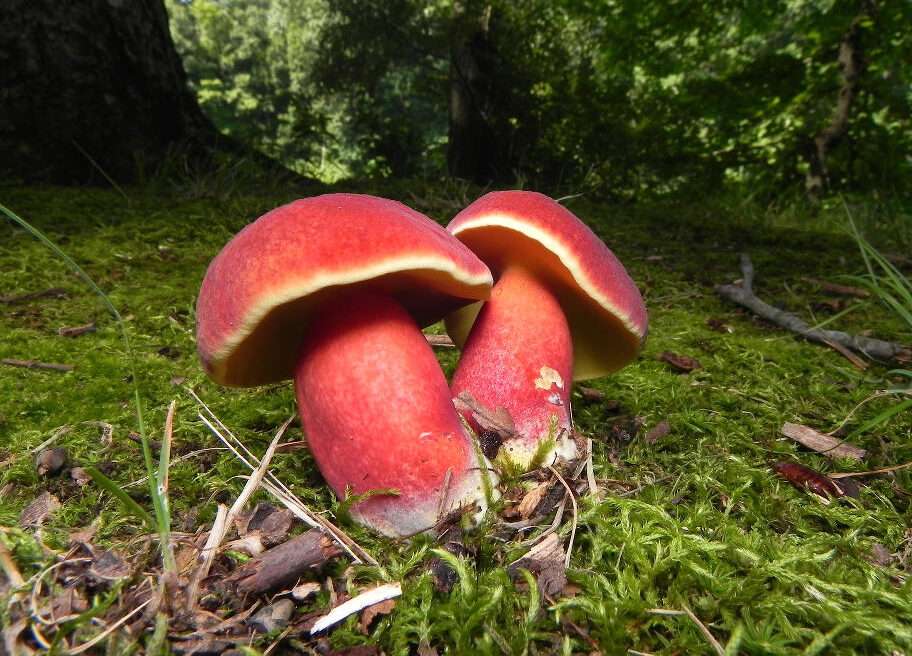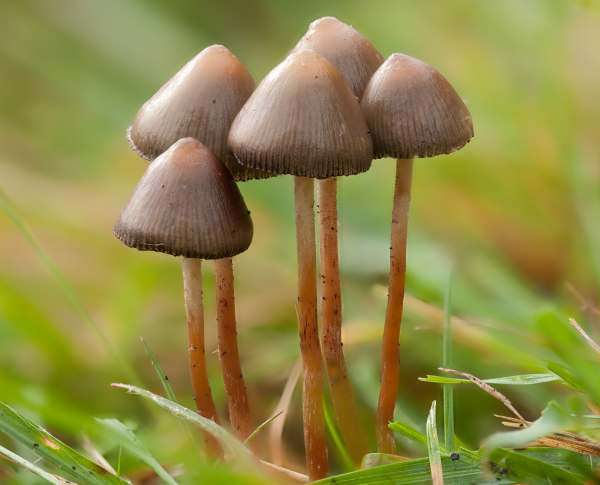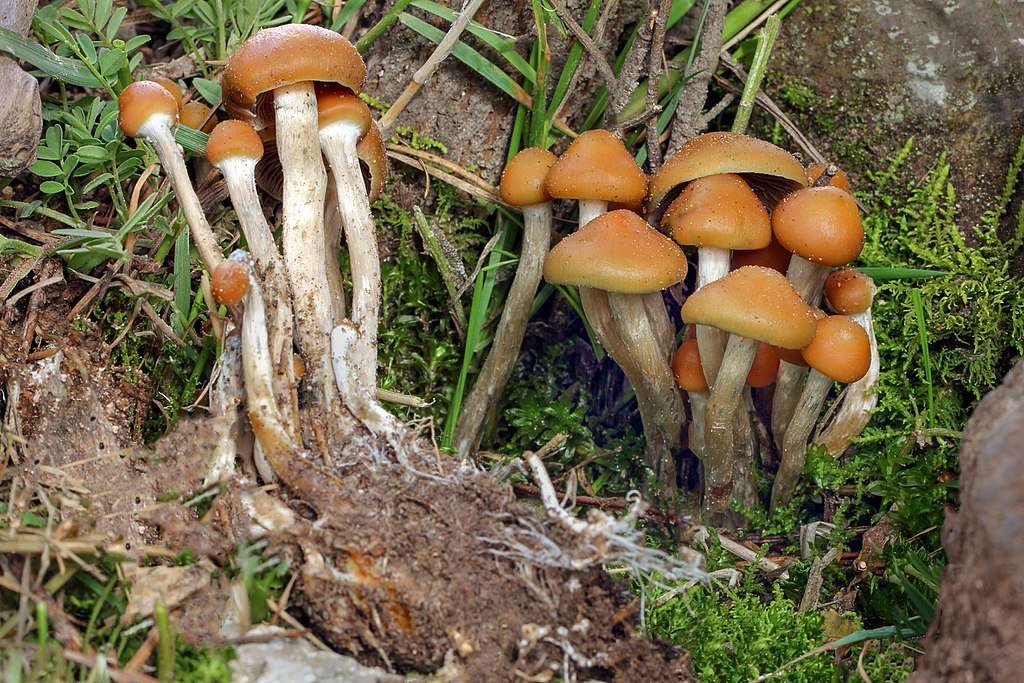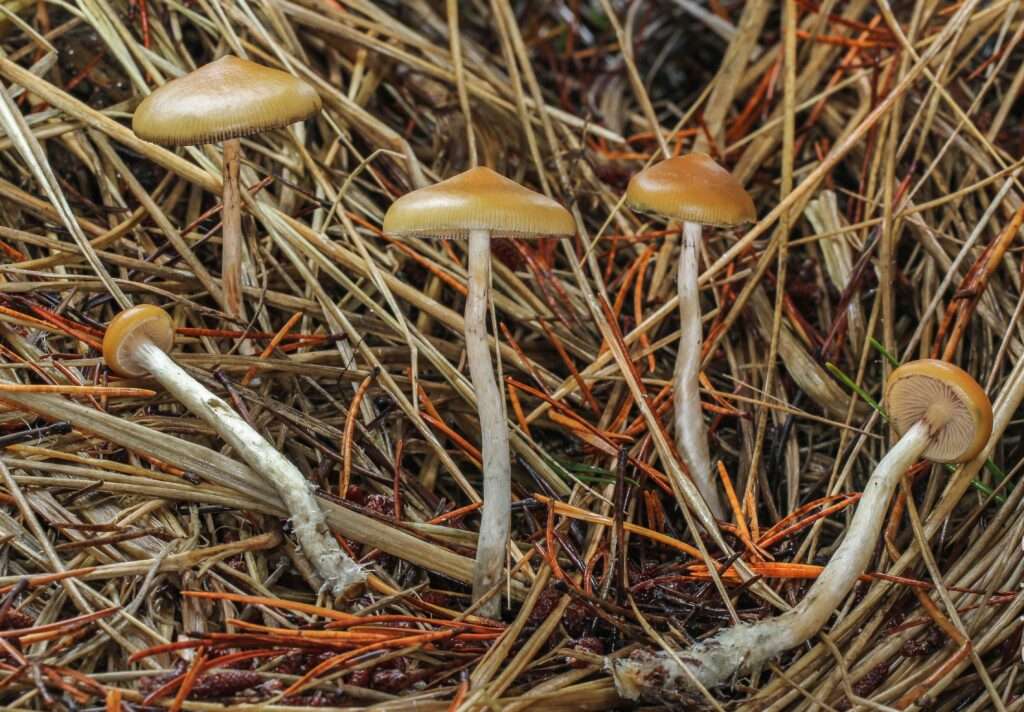
Scientific name
Baorangia bicolor
Description
The two-colored bolete’s cap ranges in color from light red and nearly pink to brick red. When mature, the most prevalent shade is brick red. The cap often has brilliant yellow pores below and is between 5 cm- 15 cm in width. The pore surface of the two-colored boletes, among other varieties of boletes, reacts in a unique way by turning dark blue or indigo when wounded, however, this response is slower compared to other bluing boletes. Similarly to the pore surface, the skin likewise becomes a dark blue when exposed, but less noticeably. Fruit bodies feature brilliant yellow pore surfaces while they are young, which gradually become dull yellow as they ripen.
The two-colored bolete stem has a length that varies between 5 cm – 10 cm and a width that varies between 1 cm – 3 cm. The stem is colored yellow at the top and reddish pink in the lower third. When damaged, it bruises blue extremely slowly and occasionally doesn’t even change its color at all.

Habitat
It frequently grows beneath or next to broad-leaved trees, particularly oak, in deciduous woods. It is mostly seen from June through October, both alone and in clusters and is found in North America, China, and Nepal.
Uses/Importance
This mushroom is edible, but some people may experience an allergic response that causes stomach trouble after eating it. The mushroom has little to no taste. According to one research, B. bicolor has a considerable number of amino acids, notably alanine, glutamine, cysteine, and glutamic acid, which are components of this mushroom’s antioxidant qualities. The same research also demonstrates the presence of large quantities of vitamin A and b-carotene in B. bicolor. The former supports immunological function and cell-to-cell communication, whilst the latter contributes to human eyesight.
According to the findings of another study that looked into the specific chemical makeup of B. bicolor, the mushroom includes minerals such as magnesium, zinc, iron, and manganese. According to the research, magnesium plays an important role in bone formation and structure. Regular use of B. bicolor may reduce the risk of skeletal disease development.
Table





